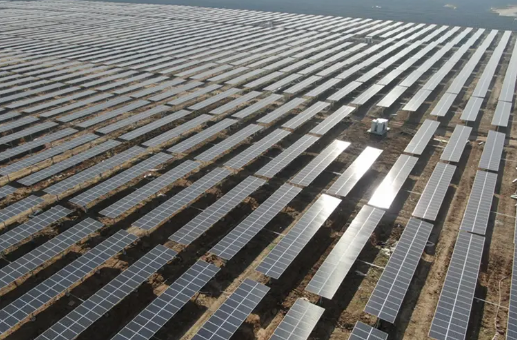Solar energy is a rapidly growing form of energy, and the solar market has also made great progress in the past decade. In 2019, the global photovoltaic installed capacity was 114.9GW, and the cumulative installed capacity reached 627GW.
The power generation of the photovoltaic system is not only related to the power and operating status of the panels, but also to the energy conversion efficiency. Therefore, the installation method of the solar photovoltaic module array has a great impact on the efficiency of the solar power generation system. However, solar energy has problems such as low density, intermittent, and the direction and intensity of light constantly changing over time. Most traditional solar photovoltaic modules are fixedly installed, that is, the panels are fixed at a certain angle and do not change with the position of the sun. The result is that the conversion efficiency will be seriously affected.
According to calculations, if the photovoltaic system deviates from the angle of sunlight by 25°, the output power of the photovoltaic array will drop by about 10% due to the reduction of vertical radiation energy. In order to solve this problem, the solar automatic tracking system came into being to maximize the intensity of sunlight perpendicular to the solar panel, thereby improving the photovoltaic conversion rate. At present, there are two main types of solar photovoltaic automatic tracking systems, including single-axis tracking and dual-axis tracking. Single-axis tracking can be divided into horizontal single-axis tracking and tilted single-axis tracking. Among them, horizontal single-axis tracking and tilted single-axis tracking have only one rotational degree of freedom, and dual-axis tracking has two rotational degrees of freedom. These tracking systems adopt active tracking control strategies, which calculate the position of the sun in the sky and control the direction of the photovoltaic array. This active photovoltaic automatic tracking system can be well applied to environments with a lot of frost, snow, and dust, and can also work reliably in unattended photovoltaic power stations.
Single-axis tracking

Single-axis tracking, that is, only one rotation axis, is used to change the position angle of the solar panel to maximize the intensity of the sun’s rays perpendicular to the solar panel, thereby improving the photovoltaic conversion rate.
a. Horizontal single-axis
The horizontal single-axis tracking system is mainly composed of: solar cell module mounting bracket, horizontal rotating shaft, rotation drive mechanism, electric control system and central control system.
This system has a simple structure, light weight, and is easy to install. It adopts mechanical linkage control, has good reliability, and is cost-effective. The components are above the bearing seat, and the bearing has strong sand resistance, strong fault identification ability, and flexible response. Compared with the traditional fixed tilt installation method, it can increase the power generation by 15%-20%. Horizontal single-axis tracking is suitable for use in areas with latitudes below 30 degrees.

b. Inclined single-axis
The inclined single-axis tracking system is suitable for use in areas with latitudes above 35 degrees. The system only needs a set of drive devices and controllers to realize automatic tracking of a single array module or multiple array modules at the same time. The unique linkage structure and maintenance-free slewing bearing make it have reliable system stability, low failure rate and low maintenance cost. Compared with the traditional fixed installation bracket, it can increase the power generation by 21%~35%, which is an ideal choice for large-scale power station construction.
The difference between flat single axis and inclined single axis:
The flat single axis bracket has no inclination angle in the south direction, which makes its radiation receiving ability poor when the solar altitude angle is low. This is particularly obvious in high latitudes. The power generation capacity of the flat single axis bracket in high latitudes will decrease, especially in winter, the power generation is even lower than that of the fixed bracket. The inclined single axis has a certain inclination angle in the south direction, so this situation is better than the flat single axis. However, the inclined single axis also has its own limitations. Due to the inclination angle in the south direction, the north side of the inclined single axis bracket is higher and higher from the ground as the rotation axis grows. Since the rear column cannot be made too high, the rotation axis of the inclined single axis cannot be made into a long axis like the flat single axis, but can only be independent individuals, which increases its cost and, of course, increases the floor space.

